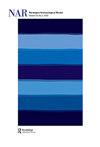Kunglig makt och samiska bosättingsmønster. Studier kring Väinö Tanners vinterbyteori
IF 1.1
3区 历史学
0 ARCHAEOLOGY
引用次数: 4
Abstract
Kunglig makt och samiska bosättingsmønster. Studier kring Väinö Tanners vinterbyteori (Royal Power and Sámi Settlement Patterns. Studies concerning Väinö Tanner’s Winter Camp Theory) is a multi-disciplinary historical-archaeological book written by Swedish archaeologist Thomas Wallerström, with contributions from palynologists Ulf Sägerström and Eva-Marie Nordström (chapters 3 and 4). The book is organised in four sections: the Introductory Section (Chapter 1); the Winter Camp Problem (Chapters 2–5); Royal Power in Swedish Lapland (Chapters 6 and 7); and Concluding Reflections (Chapter 8) (as translated to English in the Summary p. 313–322). According to Wallerström, the book focuses on the geographical area of ‘northern Scandinavia’ although ‘northern Fennoscandia with a focus on present-day northern Sweden’ would be more correct. The main objective of the book is a ‘critical investigation into the validity of the “Winter Camp Theory” formulated by the Finnish scholar Väinö Tanner’ (p. 5). The book is a result of a research project led by the author, where the Winter Camp Theory was central to the project’s main hypothesis and research questions. The project’s results seemed to contradict the basic premises of the theory and Wallerström thus positions himself as an apostate to the Winter Camp Theory in the introduction. Wallerström considers the effects of the implementations of royal supremacy (‘the state’) in the north during the early modern period as an alternative and more promising path of inquiry (Chapter 1). The Winter Camp Theory is ascribed to Väinö Tanner and his synthesis of eastern Sámi societies (‘Skolt Laps’) in his cultural-geographical studies of the Petsamo district (Tanner 1929). Tanner’s theory is presented in the Introduction, and scrutinised in detail in Chapter 2. According to Tanner, the winter camp was essential to the eastern Sámi. While otherwise extensively dispersed in base camps in the siidas’ geographical area during the spring, summer and autumn seasons, all households belonging to the siida gathered in nucleated settlements during the four winter months, from late December to late March/early April. The eastern Sámi winter camp was the arena where the norraz, an assembly of family elders with a formal leader, decided legal matters and siida policies. The settlement pattern and societal organisation of the eastern Sámi in the 1920s were considered to be the last, decaying relict of an ancient pan-Sámi way of life. Tanner claimed that his synthesis gave insight into Sámi societies untarnished by influence of the modern national states. He also claimed that similar societies had existed in all parts of Sápmi. Wallerström’s investigation was carried out as a review of the Winter Camp Theory’s genealogy, its subsequent history of impact on the scientific study of Sámi (pre-) history, as well as being an assessment of the theory’s overall validity (Section 1 and 2). Sections 3 and 4 are devoted to Wallerström’s own case study where the Winter Camp Theory is more or less declared invalid. Tanner’s Winter Camp Theory was, in part, formulated in dialogue with ideas presented by the Swedish lappologist K.B. Wiklund in 1922 (p. 53). The Finnish historian and ethnologist, Helmer Tegengren published his seminal work on the ‘extinct’ Kemi Lappmark siidas in present day Finland in 1952. His historical reconstruction implicitly relied on Tanner’s Winter Camp model, although he hardly found references to Tanner necessary (p. 65). Wallerström’s description of the theory’s genealogy focuses on these three pivotal stages, Wiklunds sketchy王室权力和萨米人定居模式。VäinöTanner的冬季变化理论研究
Kunglig makt och samiska bosättingsmønster。Studier kring VäinöTanners vinterbytori(王室权力和萨米人定居模式。关于VänöTanner冬令营理论的研究)是瑞典考古学家Thomas Wallerström撰写的一本多学科历史考古书籍,由孢粉学家Ulf Sägerström和Eva Marie Nordström贡献(第3章和第4章)。本书分为四个部分:引言部分(第一章);冬令营问题(第2-5章);瑞典拉普兰的王权(第6章和第7章);和《结论性思考》(第8章)(见第313-322页摘要中的英译本)。根据Wallerström的说法,这本书关注的是“斯堪的纳维亚北部”的地理区域,尽管“芬诺斯坎迪亚北部,关注现在的瑞典北部”会更正确。本书的主要目的是“对芬兰学者VäinöTanner提出的“冬令营理论”的有效性进行批判性调查”(第5页)。这本书是作者领导的一个研究项目的成果,其中冬令营理论是该项目的主要假设和研究问题的核心。该项目的结果似乎与该理论的基本前提相矛盾,因此沃勒斯特罗姆在引言中将自己定位为冬令营理论的叛教者。Wallerström认为,现代早期在北方实施王室至上主义(“国家”)的影响是一种替代性的、更有前景的调查途径(第1章)。夏令营理论被认为是VäinöTanner和他在Petsamo地区的文化地理研究中对东部萨米社会的综合(“Kolt Laps”)(Tanner 1929)。Tanner的理论在引言中介绍,并在第二章中详细阐述。根据Tanner的说法,冬令营对萨米东部地区至关重要。尽管在春季、夏季和秋季期间广泛分散在锡伊达地理区域的大本营,但在12月底至3月底/4月初的四个冬季月份,锡伊达的所有家庭都聚集在有核的定居点。萨米东部冬令营是norraz的舞台,norraz是一个由正式领导人组成的家庭长老大会,在这里决定法律事务和siida政策。20世纪20年代,东部萨米人的定居模式和社会组织被认为是古代泛萨米人生活方式的最后一个腐朽遗迹。坦纳声称,他的综合作品深入了解了未受现代民族国家影响的萨米社会。他还声称,类似的社会在萨米的各个地区都存在。Wallerström的调查是对冬令营理论谱系的回顾,它对萨米(前)历史科学研究的后续影响历史,以及对该理论总体有效性的评估(第1和第2节)。第3节和第4节专门介绍了Wallerström自己的案例研究,其中冬令营理论或多或少被宣布无效。Tanner的“冬令营理论”在一定程度上是在与瑞典波兰学家K.B.Wiklund于1922年提出的观点的对话中提出的(第53页)。芬兰历史学家和民族学家Helmer Tegengren于1952年在今天的芬兰发表了他关于“已灭绝”的Kemi Lappmark siidas的开创性著作。他的历史重建隐含地依赖于坦纳的冬令营模型,尽管他几乎没有必要提及坦纳(第65页)。Wallerström对该理论谱系的描述集中在这三个关键阶段,Wiklunds粗略
本文章由计算机程序翻译,如有差异,请以英文原文为准。
求助全文
约1分钟内获得全文
求助全文
来源期刊

Norwegian Archaeological Review
ARCHAEOLOGY-
CiteScore
2.10
自引率
0.00%
发文量
13
期刊介绍:
Norwegian Archaeological Review published since 1968, aims to be an interface between archaeological research in the Nordic countries and global archaeological trends, a meeting ground for current discussion of theoretical and methodical problems on an international scientific level. The main focus is on the European area, but discussions based upon results from other parts of the world are also welcomed. The comments of specialists, along with the author"s reply, are given as an addendum to selected articles. The Journal is also receptive to uninvited opinions and comments on a wider scope of archaeological themes, e.g. articles in Norwegian Archaeological Review or other journals, monographies, conferences.
 求助内容:
求助内容: 应助结果提醒方式:
应助结果提醒方式:


